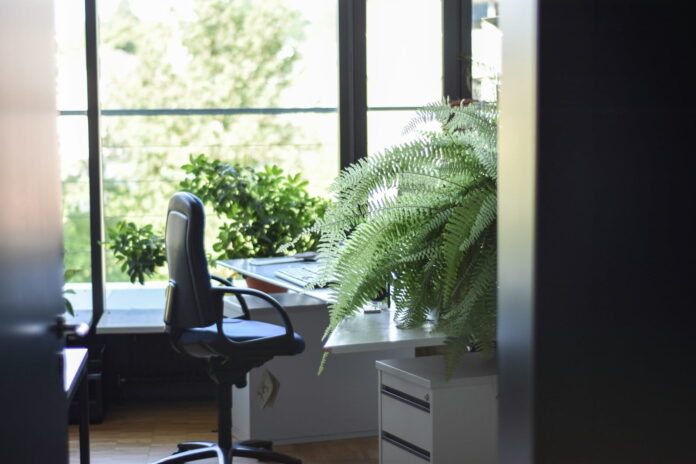In the modern era, as we spend the majority of our waking hours within the confines of office buildings, the design of these spaces has increasingly become a focal point for enhancing employee well-being and productivity. One innovative approach that has gained significant traction is biophilic design, which incorporates natural elements into the built environment. This concept is rooted in the intrinsic human need to connect with nature, a need that is often unmet in traditional office settings. By embracing green and integrating biophilic design into modern offices, businesses are not only creating more aesthetically pleasing spaces but are also investing in the physical and psychological health of their workforce.
The Essence of Biophilic Design
Biophilic design is an innovative approach that seeks to connect our inherent need to affiliate with nature in the modern built environment. Its essence lies in the understanding that humans have evolved over millennia in a sensorially rich environment, developing a deep biological connection with nature. Biophilic design aims to replicate these natural elements and experiences within architectural and interior design, thereby fostering a stronger connection between nature and the spaces we inhabit. It is about more than just adding plants to interiors; it involves a thoughtful integration of natural materials, light, vegetation, and nature views into a cohesive design that resonates with our primal affiliations.
At its core, biophilic design is about creating a holistic environment that impacts our senses. It incorporates aspects such as natural lighting, which not only illuminates spaces but also provides the body with essential cues for regulating circadian rhythms. The use of natural materials such as wood, stone, and fibers is another principle of biophilic design, bringing tactile and visual warmth to spaces. Furthermore, biophilic design often includes water features, which can provide calming sounds and visual serenity. These elements work in concert to create a sense of comfort and well-being that echoes the natural world.
Biophilic design does not merely mimic nature but also evokes its processes and patterns. It emphasizes the use of organic shapes that are irregular and complex, much like those found in natural environments. Incorporating dynamic and diffuse light, natural ventilation, and views of the outdoors, biophilic design is about creating living, adaptive spaces that change and evolve. This dynamic quality engages our innate biophilia, allowing us to feel a sense of belonging and vitality within our work environments.
Biophilic Elements in Office Spaces
The incorporation of biophilic elements into office spaces is a multifaceted process that goes beyond simple decor choices. One of the primary ways to bring the outdoors in is through the inclusion of plant life. From potted plants to living walls and indoor gardens, greenery not only enhances the visual appeal of an office but also improves air quality and provides a connection to the cycles of nature. Another element is natural light, which can be maximized through the use of large windows, skylights, and strategically placed mirrors to reflect light throughout the space.
The use of materials is also a critical component of biophilic office design. Natural materials like bamboo, cork, and reclaimed wood can be utilized for flooring, wall coverings, and furniture, creating a warm and inviting atmosphere. Textural variety that mimics the diversity found in nature can be integrated through the use of fabrics and finishes. Incorporating nature-inspired art and imagery can help to create a visually stimulating environment that reminds occupants of the natural world outside.
Acoustic comfort is another biophilic element that enhances the office environment. The integration of soundscapes that mimic nature, such as the sound of water or birdsong, can mask unwanted noise and contribute to a restorative atmosphere. Additionally, creating spaces that offer views of the outside, or at least provide a sense of openness and spaciousness, can help to reduce stress and mental fatigue. Varied seating arrangements and the inclusion of natural shapes and forms can also foster a more dynamic and engaging workspace that resonates with our natural preferences.
Benefits of Green Work Environments
Green work environments enriched with biophilic design elements have been shown to offer a multitude of benefits, both for employees and employers. One of the most immediate effects is an increase in worker well-being. Employees working in environments with natural elements report higher levels of well-being, reduced stress, and increased job satisfaction. This is partly due to the calming influence of nature, which can lead to reduced heart rates and lower blood pressure, contributing to overall health.
Green workspaces can boost productivity and creativity. Studies have shown that natural light and greenery can enhance cognitive function, improve focus, and stimulate creativity. This is not only beneficial for the individual employee but also translates into better outcomes for the company as a whole. Enhanced performance, fewer sick days, and a more motivated workforce are all positive repercussions of investing in a biophilic office design.
In addition to the health and productivity advantages, green office environments can serve as a tool for businesses in attracting and retaining talent. A well-designed office space that prioritizes employee well-being can be a significant draw for potential employees and can enhance a company’s reputation as a forward-thinking and employee-centric workplace. Furthermore, biophilic design can lead to energy savings through the use of natural lighting and ventilation, contributing to a company’s sustainability goals and reducing its carbon footprint.
Embracing green through biophilic design in modern office spaces is more than a trend; it is an acknowledgment of the deep-seated connection between humans and nature. By integrating natural elements, materials, and principles into our work environments, we can create spaces that not only enhance aesthetic appeal but also promote health, well-being, and productivity. The benefits of such green work environments are manifold, impacting not only the individual employee but the broader goals of the company and the environment. As we continue to evolve and innovate in our approach to office design, biophilic principles offer a guiding light towards creating harmonious and sustainable spaces that enrich our daily lives and work experiences.
